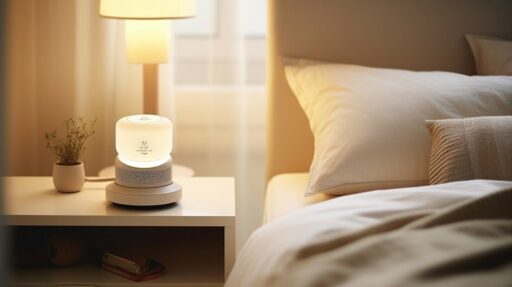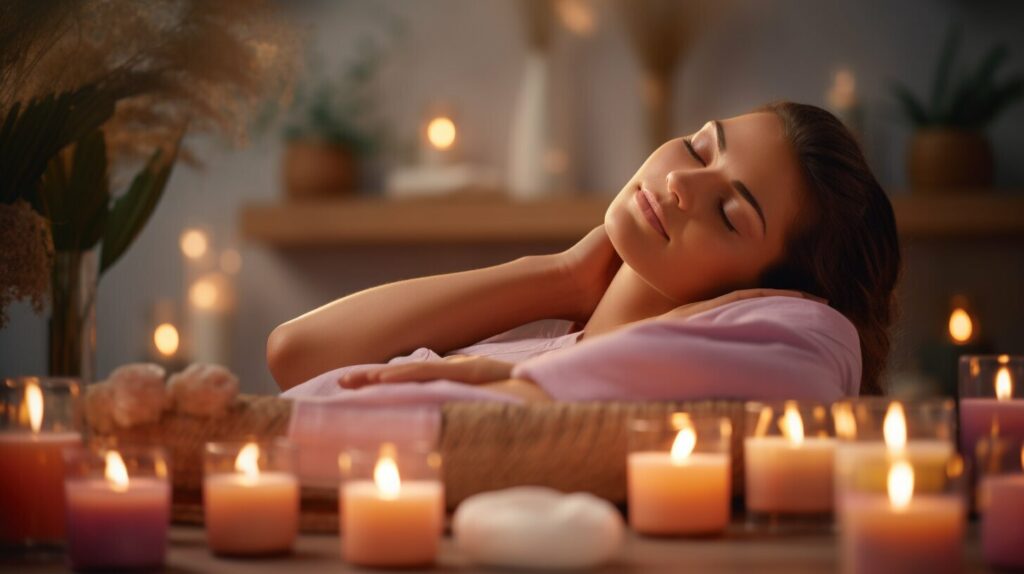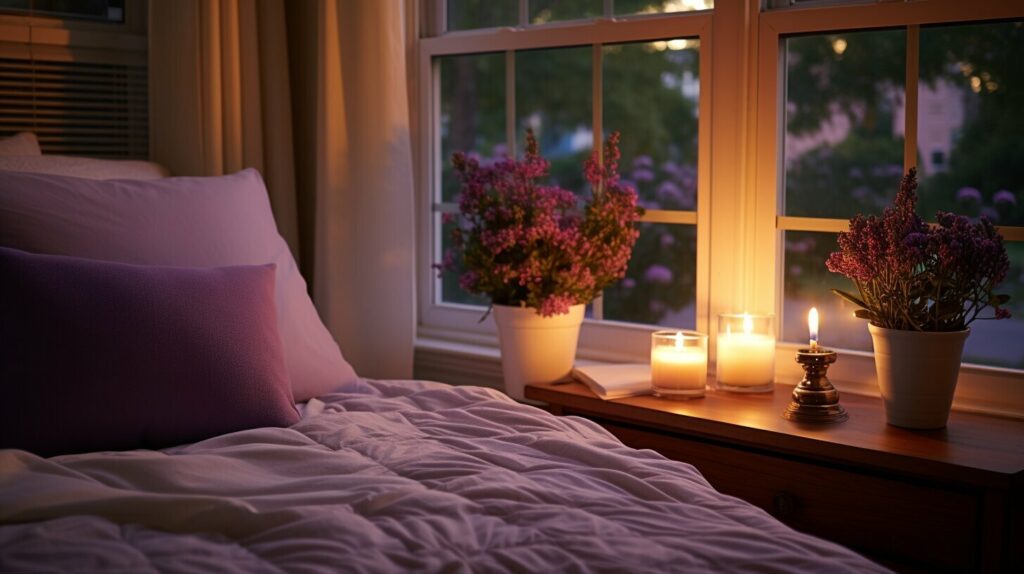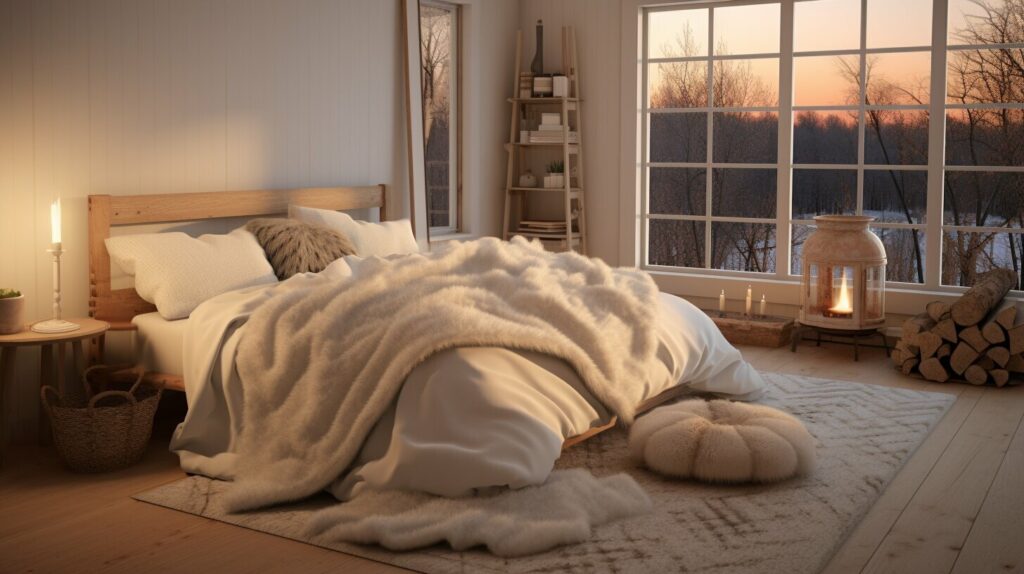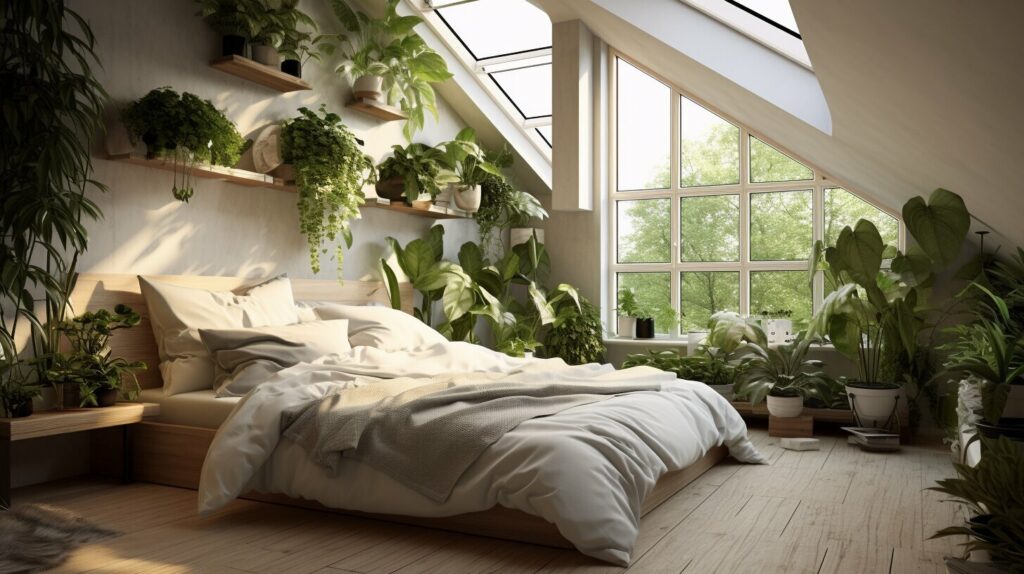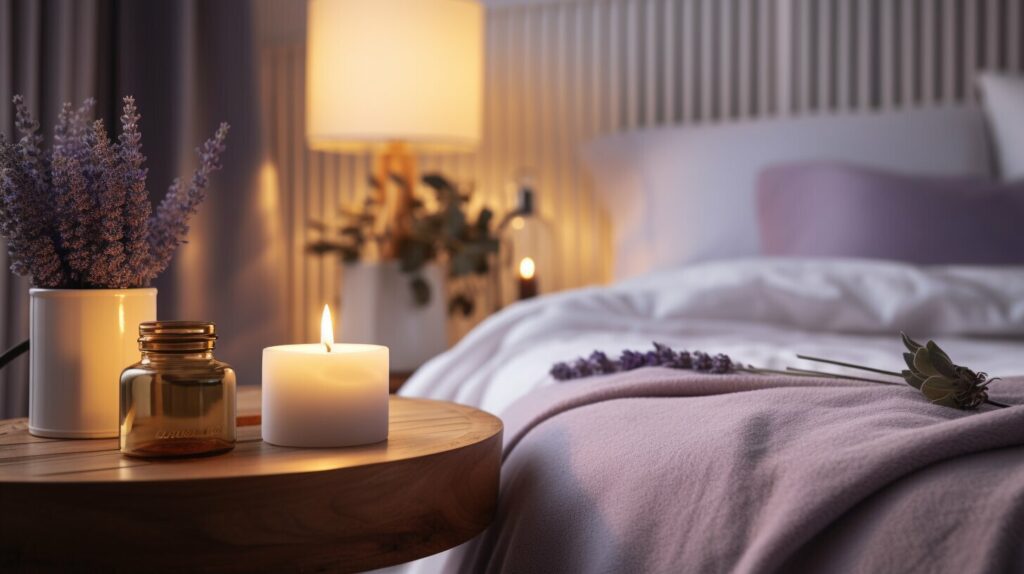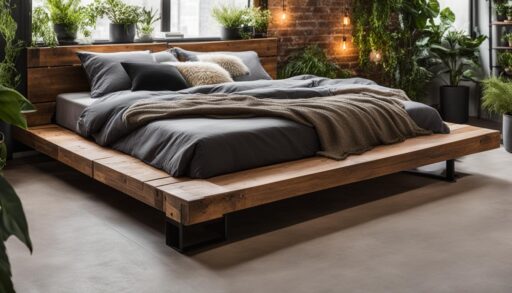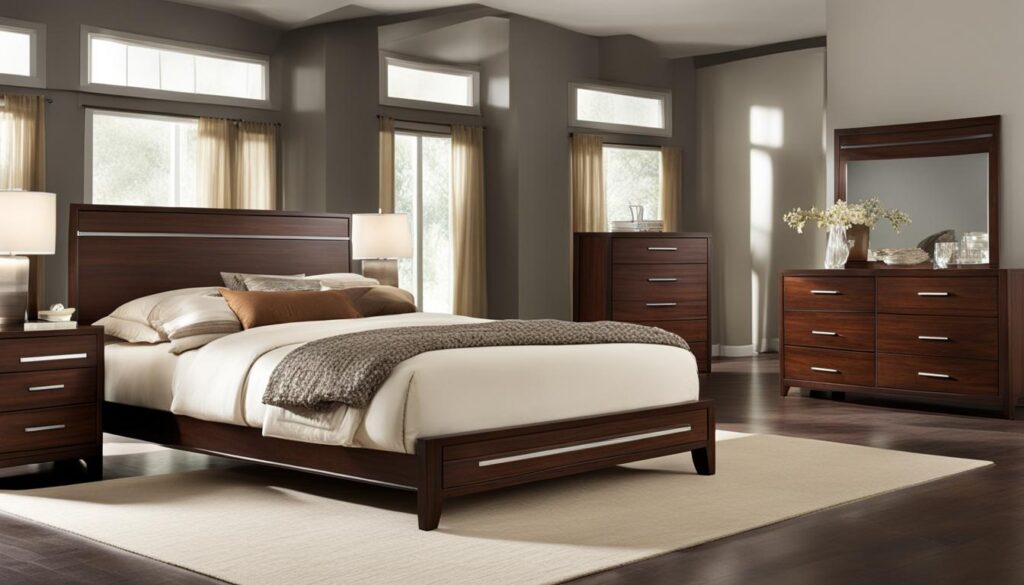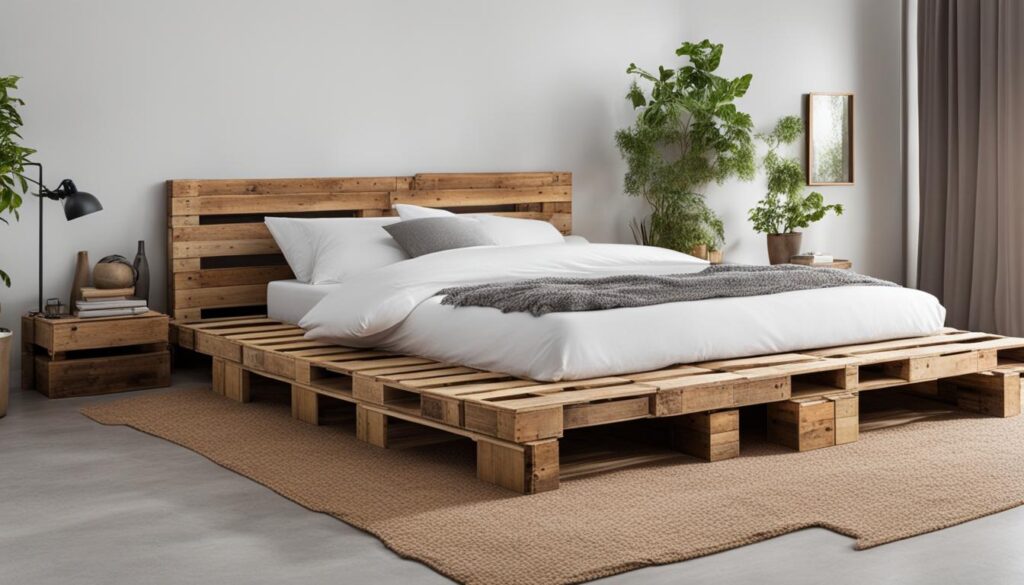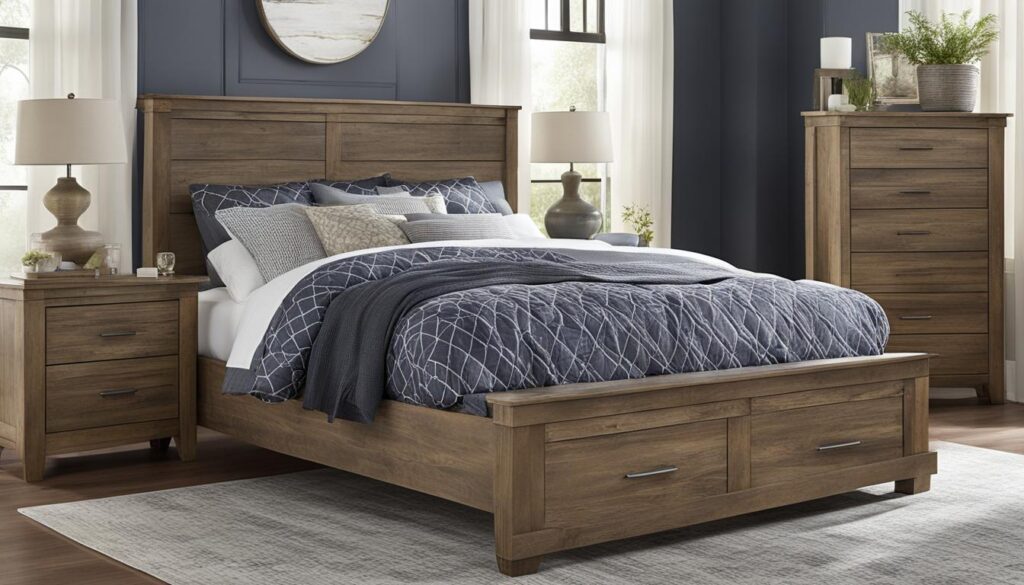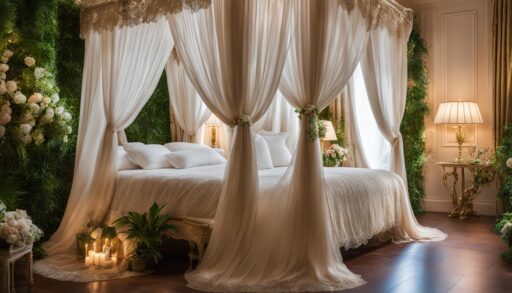Effective Sleep Sound Solutions for a Better Night’s Rest
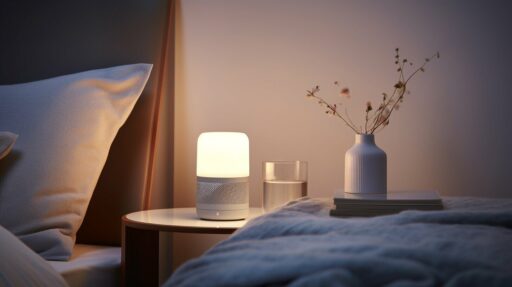
Discover the power of Sleep Sound Solutions, including white noise machines and sleep soundtracks, to enhance your sleep and wake up feeling refreshed. These natural sleep aids can help improve sleep quality, provide sleep therapy, and offer effective sleep remedies. By incorporating these solutions into your routine, along with adopting better sleep habits, you can find relief from sleep disorders and combat sleep deprivation.
Key Takeaways:
- Sleep sound solutions, such as white noise machines and sleep soundtracks, can improve sleep quality.
- Popular white noise machines on the market include the Dreamegg D1, Snooz Sound Machine, and Allway Aqua10.
- The Dreamegg D1 offers a sleek design and a range of sounds, while the Snooz Sound Machine plays the comforting whir of a fan.
- The Allway Aqua10 doubles as a Bluetooth speaker and humidifier, but may have some functionality issues.
- Other recommended white noise machines include the Sound+Sleep Mini and the Hatch Restore 2, which combines light and sound therapy.
The Benefits of White Noise Machines
White noise machines offer a range of benefits to improve sleep quality and promote sleep therapy. These devices have gained popularity as natural sleep aids, helping individuals create a calming sleep environment and alleviate sleep disorders. Here are some key advantages of using white noise machines:
- Masking Sudden Bursts of Noise: White noise machines emit a steady, consistent sound that masks sudden noises such as traffic, snoring, or barking dogs. This helps to drown out disruptions and create a more peaceful sleeping environment.
- Creating a Soothing Environment: The consistent sound produced by white noise machines creates a soothing ambiance that promotes relaxation and sleep. It can help to block out background sounds and provide a sense of tranquility, making it easier to fall asleep and stay asleep.
- Aiding Sleep Disorders: White noise machines are particularly beneficial for individuals with sleep disorders, such as insomnia or sleep apnea. The continuous sound can help to mask interruptions in sleep caused by these conditions and promote a more restful night’s sleep.
- Promoting Better Sleep Habits: By providing a consistent and calming sound, white noise machines can help establish a bedtime routine and signal the body to relax and prepare for sleep. This can contribute to better sleep habits and improved sleep quality over time.
Incorporating a white noise machine into your sleep routine can be a simple yet effective way to enhance your sleep quality and overall sleep wellness. Now, let’s take a closer look at some popular white noise machines available on the market.
| White Noise Machine | Key Features |
|---|---|
| Dreamegg D1 | Sleek design, range of sounds |
| Snooz Sound Machine | Plays the comforting whir of a fan, fade-in and fade-out feature |
| Allway Aqua10 | Doubles as a Bluetooth speaker and humidifier |
These white noise machines offer diverse features and functionalities to cater to different sleep preferences. Let’s explore the Dreamegg D1, Snooz Sound Machine, and Allway Aqua10 in more detail.
Popular White Noise Machines on the Market
Explore the world of white noise machines and discover top options like the Dreamegg D1, Snooz Sound Machine, and Allway Aqua10. These white noise machines are designed to create a soothing and calming environment for better sleep quality. Let’s take a closer look at each of these popular choices.
Dreamegg D1
The Dreamegg D1 is a sleek and stylish white noise machine that offers a range of sounds to help you improve your sleep quality. With its compact design and light-up rim, it not only provides soothing sounds but also adds a touch of elegance to your bedroom. From calming rain to gentle waves, the Dreamegg D1 has a variety of options to create the perfect sleep environment.
Snooz Sound Machine
If you love the sound of a fan, the Snooz Sound Machine is the perfect choice for you. This white noise machine plays the comforting whir of a fan, helping to block out unwanted noises and create a peaceful atmosphere. It also features a fade-in and fade-out feature, allowing you to gradually adjust the volume as you drift off to sleep.
Allway Aqua10
The Allway Aqua10 is a multi-functional sleep sound solution that does more than just provide soothing sounds. This white noise machine doubles as a Bluetooth speaker and a humidifier, offering additional benefits for a restful sleep. However, it’s important to note that some users have reported functionality issues with this particular model.
| White Noise Machine | Features | Additional Functions |
|---|---|---|
| Dreamegg D1 | Sleek design, range of sounds | N/A |
| Snooz Sound Machine | Plays fan sounds, fade-in and fade-out feature | N/A |
| Allway Aqua10 | N/A | Bluetooth speaker, humidifier |
No matter which white noise machine you choose, the benefits of these devices are clear. They help mask sudden bursts of noise, create a soothing environment, and promote better sleep quality. Incorporating a white noise machine into your sleep routine can make a significant difference in your overall sleep wellness. Sweet dreams!
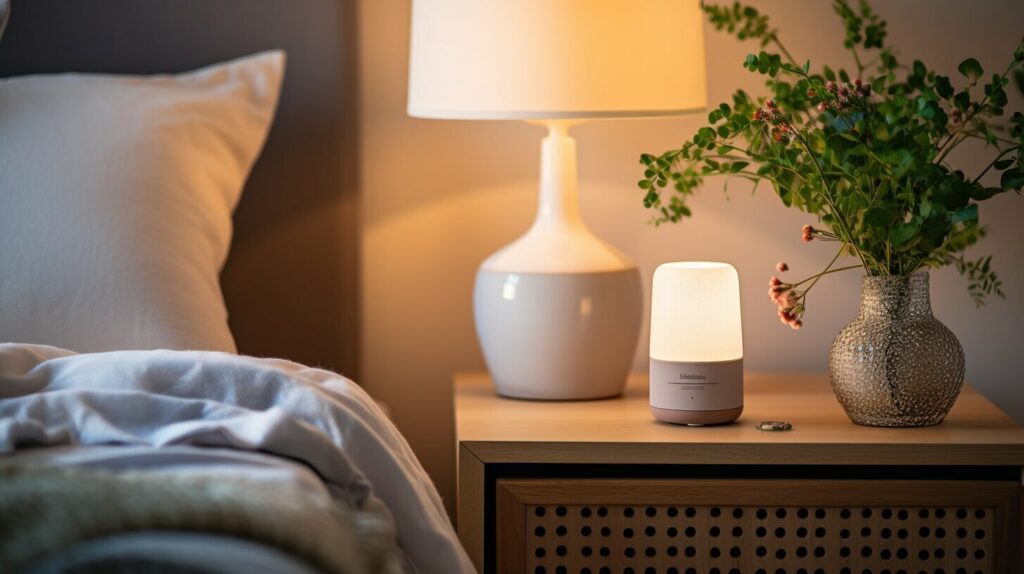
Wake up refreshed with the Dreamegg D1 white noise machine – a versatile sleep sound solution designed to enhance your sleep experience. Its sleek design and range of sounds make it a perfect addition to any bedroom.
The Dreamegg D1 features a sleek and modern design with a light-up rim, adding a touch of elegance to your sleep environment. It is compact and portable, making it convenient to take with you when traveling or to use in different rooms of your home.
With a wide range of sounds to choose from, the Dreamegg D1 allows you to customize your sleep soundtrack. From soothing white noise and gentle rain sounds to calming ocean waves and relaxing lullabies, you can find the perfect sound to help you drift off to sleep.
Not only does the Dreamegg D1 provide a soothing environment for sleep, but it also helps to improve sleep quality. By masking sudden bursts of noise and creating a consistent sound backdrop, it helps to drown out distractions and promote a deeper, more restful sleep.
| Dreamegg D1 Features: |
|---|
| Sleek and modern design |
| Wide range of sounds |
| Helps to improve sleep quality |
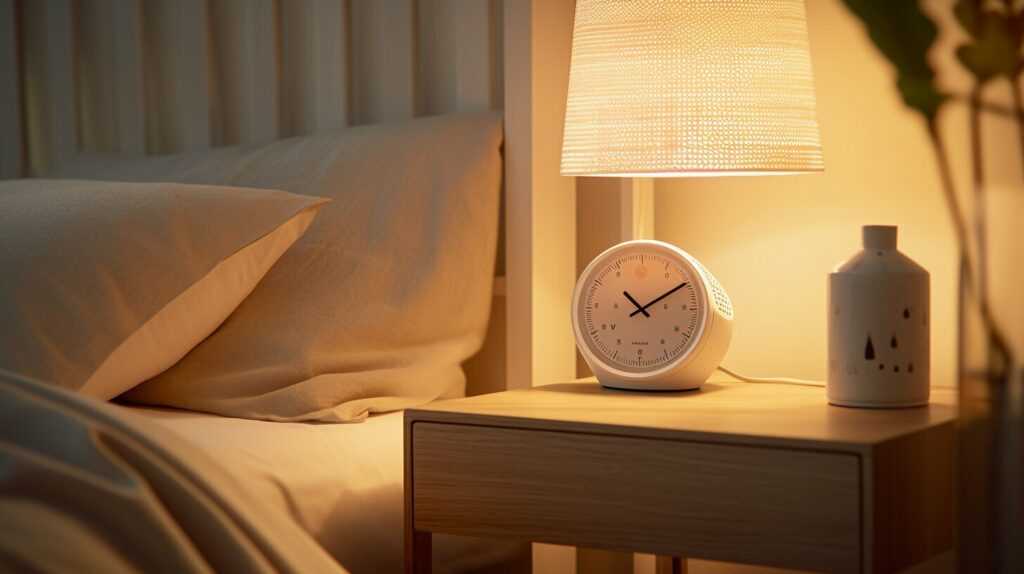
Experience the benefits of the Dreamegg D1 white noise machine and enjoy a peaceful night’s sleep. Its sleek design, range of sounds, and ability to improve sleep quality make it a top choice for sleep sound solutions.
Snooz Sound Machine: The Comforting Whir of a Fan
Experience the soothing sounds of a fan with the Snooz Sound Machine – a sleep sound solution that promotes relaxation and improves sleep quality. This innovative device is designed to create a calming environment by mimicking the comforting whir of a fan. With its white noise options, the Snooz Sound Machine effectively masks unwanted noises and lulls you into a deep and restful sleep.
One of the standout features of the Snooz Sound Machine is its fade-in and fade-out feature. This gradual increase and decrease in volume help transition your mind and body into a state of relaxation, making it easier to fall asleep and stay asleep throughout the night.

Creating a Soothing Sleep Environment
In addition to its fade-in and fade-out feature, the Snooz Sound Machine offers customizable sound settings. You can choose from different white noise options, such as fan sounds, gentle surf, or a calming rain shower, to create your ideal sleep environment. By personalizing the sound experience, you can optimize your sleep quality and enhance your overall sleep wellness.
| Key Features of the Snooz Sound Machine: |
|---|
| Fade-in and fade-out feature for seamless transitions |
| Customizable sound settings |
| Compact and portable design |
| User-friendly controls |
| High-quality speaker |
The Snooz Sound Machine is also designed with convenience in mind. Its compact and portable design allows you to take it with you wherever you go, ensuring a restful sleep even when you’re away from home. The user-friendly controls make it easy to adjust the volume and sound settings to your preference, putting you in control of your sleep environment.
“The Snooz Sound Machine has been a game-changer for my sleep routine. It effectively blocks out noise and creates a relaxing atmosphere. The fade-in and fade-out feature makes it effortless to drift off to sleep, and the compact design is perfect for travel. Highly recommended!” – Sarah, satisfied Snooz Sound Machine user.
Invest in the Snooz Sound Machine and transform your sleep experience. Embrace the soothing sounds of a fan and enjoy the benefits of improved sleep quality and relaxation. Say goodbye to sleepless nights and wake up feeling refreshed and rejuvenated with the Snooz Sound Machine.
Allway Aqua10: A Multi-functional Sleep Sound Solution
Explore the versatility of the Allway Aqua10, a multi-functional sleep sound solution that enhances your sleep environment. This white noise machine not only produces soothing sounds to promote relaxation and sleep but also doubles as a Bluetooth speaker and humidifier. With its sleek design and practical features, the Allway Aqua10 is a convenient addition to your sleep routine.

What sets the Allway Aqua10 apart is its ability to cater to your individual needs. As a white noise machine, it offers a range of sounds, including white noise, nature sounds, and gentle melodies, to create a calm and peaceful ambiance. Whether you prefer the sound of raindrops or the tranquil hum of a fan, the Allway Aqua10 has you covered.
In addition to its white noise capabilities, the Allway Aqua10 functions as a Bluetooth speaker, allowing you to play your favorite relaxing music or audiobooks. Pair it with your smartphone or other Bluetooth-enabled devices, and immerse yourself in soothing melodies that lull you into a deep slumber.
Furthermore, the Allway Aqua10 incorporates a humidifier, adding moisture to the air and preventing dryness, which can cause irritation and disrupt sleep. By maintaining an optimal level of humidity, this multi-functional sleep sound solution helps create a comfortable sleep environment and minimize disturbances throughout the night.
| Key Features: | Benefits: |
|---|---|
| White Noise Machine | Creates a calming sleep environment |
| Bluetooth Speaker | Allows you to play your favorite music or audiobooks |
| Humidifier | Prevents dryness and promotes better sleep quality |
“The Allway Aqua10 is a game-changer for my sleep routine. I love how it combines the benefits of a white noise machine, Bluetooth speaker, and humidifier. It helps me relax and unwind before bed, ensuring a restful night’s sleep. Highly recommended!” – Sarah R.
With its multi-functional design and soothing features, the Allway Aqua10 is an excellent choice for those seeking a comprehensive sleep sound solution. Experience the benefits of improved sleep quality and create a serene sleep environment with the Allway Aqua10.
Disclaimer: While the Allway Aqua10 offers a range of features and benefits, individual preferences may vary. It is important to consult with a healthcare professional for personalized advice regarding sleep disorders or related conditions.
Sound+Sleep Mini: Highly Recommended White Noise Machine
Discover the Sound+Sleep Mini, a top-rated white noise machine that offers a wide variety of sounds and advanced features to improve your sleep quality. With 48 different sounds to choose from, including rain, fans, ocean sounds, and white noise, you can find the perfect sound to create a soothing sleep environment.
The Sound+Sleep Mini is designed to mask sudden bursts of noise and create a calming atmosphere for sleep. Its adaptive sound mode automatically adjusts the volume to cover up environmental sounds, ensuring a peaceful night’s rest. The device features high-fidelity speakers that deliver clear and crisp sound, allowing you to fully immerse yourself in the soothing soundscape.
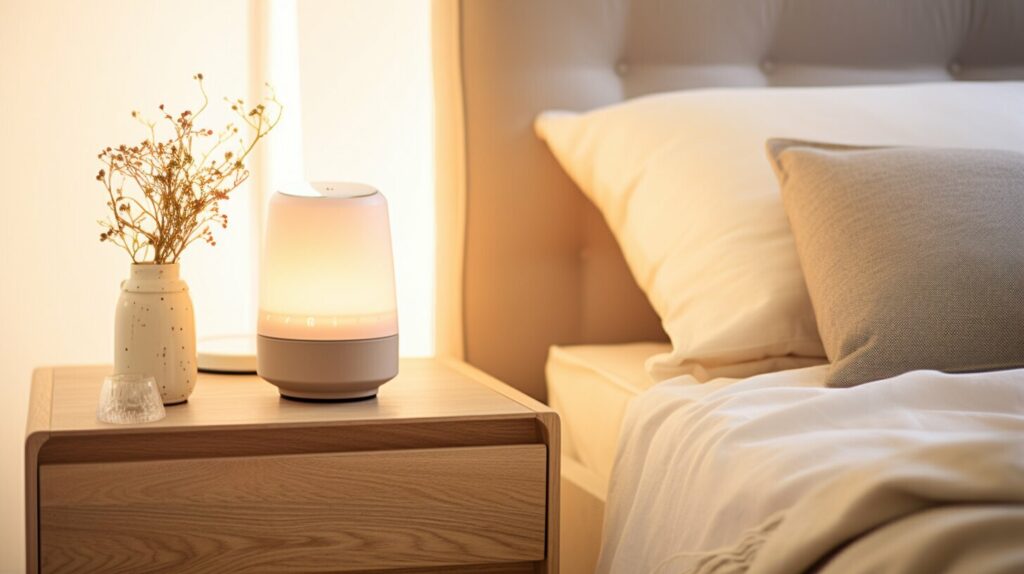
The compact design of the Sound+Sleep Mini makes it ideal for travel or small spaces. Its intuitive interface and easy-to-use controls allow for seamless navigation and customization. Whether you prefer a soft lullaby or a gentle rainstorm, this white noise machine has something to suit every preference.
| Features | Benefits |
|---|---|
| 48 different sounds | Diverse range of options to cater to individual preferences |
| Adaptive sound mode | Covers up environmental noises for uninterrupted sleep |
| High-fidelity speakers | Delivers clear and immersive sound |
| Compact design | Portable and suitable for travel |
Experience the power of sound with the Sound+Sleep Mini and enjoy a restful sleep night after night. Invest in this highly recommended white noise machine to improve your sleep quality and wake up feeling refreshed and rejuvenated.
Hatch Restore 2: All-Encompassing Sleep Machine
Experience the ultimate sleep machine with the Hatch Restore 2 – a comprehensive solution that combines light and sound therapy for optimal sleep. This innovative device offers a variety of features designed to promote relaxation, improve sleep quality, and enhance your overall well-being.
With the Hatch Restore 2, you can create a personalized sleep environment by choosing from a range of themed light and sound combinations. Whether you prefer the gentle glow of the sunset or the tranquil sounds of nature, this sleep machine has got you covered. The Sunrise feature gradually brightens the room, mimicking the natural light of a sunrise to help you wake up feeling refreshed and energized.
The Hatch Sleep Membership subscription provides access to additional features and content, including guided meditations and sleep programs. This comprehensive sleep solution is designed to meet all your sleep needs, providing not only a restful night’s sleep but also a peaceful and rejuvenating morning.
| Key Features | Benefits |
|---|---|
| Light and sound therapy | Improves sleep quality |
| Themed light and sound combinations | Promotes relaxation |
| Sunrise feature | Natural wake-up process |
| Hatch Sleep Membership | Access to additional features and content |
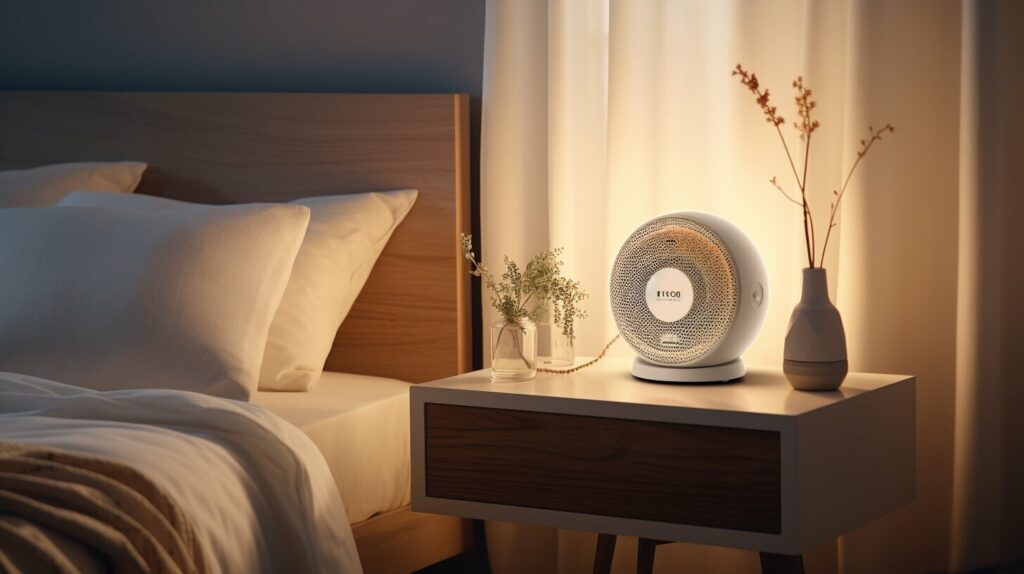
No more restless nights or groggy mornings. With the Hatch Restore 2, you can create your own sleep sanctuary and enjoy the benefits of light and sound therapy. Say goodbye to sleepless nights and hello to rejuvenating sleep with this all-encompassing sleep machine.
White Noise App: Your Portable Sleep Sound Solution
Take your sleep sound solution on the go with the White Noise app – a versatile and customizable tool for improving your sleep quality. Whether you’re at home, traveling, or in need of calm and relaxation, this app provides a wide range of soothing sounds to create your ideal sleep environment.
The White Noise app offers a diverse selection of customizable timers and alarms, allowing you to tailor your sleep experience to your preferences. You can set timers to gradually fade out the sound as you drift off to sleep, or wake up gently to your favorite calming track. With customizable options, you can create the perfect sleep routine that suits your unique needs.

This user-friendly app features an extensive library of sounds, including white noise, colored noise, water sounds, campfires, fans, and more. You can explore different options and find the sounds that help you relax and unwind. Additionally, the White Noise app allows you to download additional sounds from its marketplaces, ensuring that there is always a variety of options to choose from.
Improve your sleep quality and create a calming sleep environment with the White Noise app. Whether you’re looking to reduce stress, block out external noises, or simply enjoy a restful night’s sleep, this portable sleep sound solution has you covered. Download the app today and experience the benefits of soothing sounds for a more peaceful and rejuvenating sleep.
The Effectiveness of Sleep Sound Solutions
Sleep sound solutions have been proven effective in enhancing sleep quality, addressing sleep disorders, and fostering healthier sleep patterns. White noise machines and sleep soundtracks create a soothing environment that helps individuals relax and fall asleep more easily. These sleep sound solutions work by masking sudden bursts of noise, such as traffic or noisy neighbors, and create a consistent background sound that promotes better sleep.
One popular and highly recommended white noise machine is the Sound+Sleep Mini. With 48 different sounds to choose from, including rain, fans, ocean sounds, and white noise, users can find the perfect sound to suit their preferences. The adaptive sound mode increases the volume to cover up environmental sounds, ensuring a peaceful sleeping environment. The Sound+Sleep Mini also features high-fidelity speakers and a compact design, making it a versatile and effective sleep sound solution.
For those looking for a comprehensive sleep machine, the Hatch Restore 2 is an excellent choice. Combining light and sound therapy, this device helps users fall asleep faster and stay asleep longer. With a variety of themed light and sound combinations, including a gentle Sunrise feature for waking up naturally, the Hatch Restore 2 promotes a healthy sleep-wake cycle. Additionally, the Hatch Sleep Membership subscription offers access to additional features and content, enhancing the overall sleep experience.
If you prefer a portable sleep sound solution, the White Noise app is a convenient option. With an extensive selection of sounds to choose from, including white noise, colored noise, water sounds, campfires, and fans, the app allows you to create a personalized sleep environment. Customizable timers and alarms ensure that you can optimize your sleep routine and wake up feeling refreshed. Plus, the ability to download additional sounds from the app’s marketplaces provides even more options to enhance your sleep experience.
By incorporating sleep sound solutions into your sleep routine, you can improve sleep quality, address sleep disorders, and develop better sleep habits. Whether you opt for a white noise machine, sleep soundtrack, or a combination of both, these tools can create a serene and calming environment conducive to a restful night’s sleep.
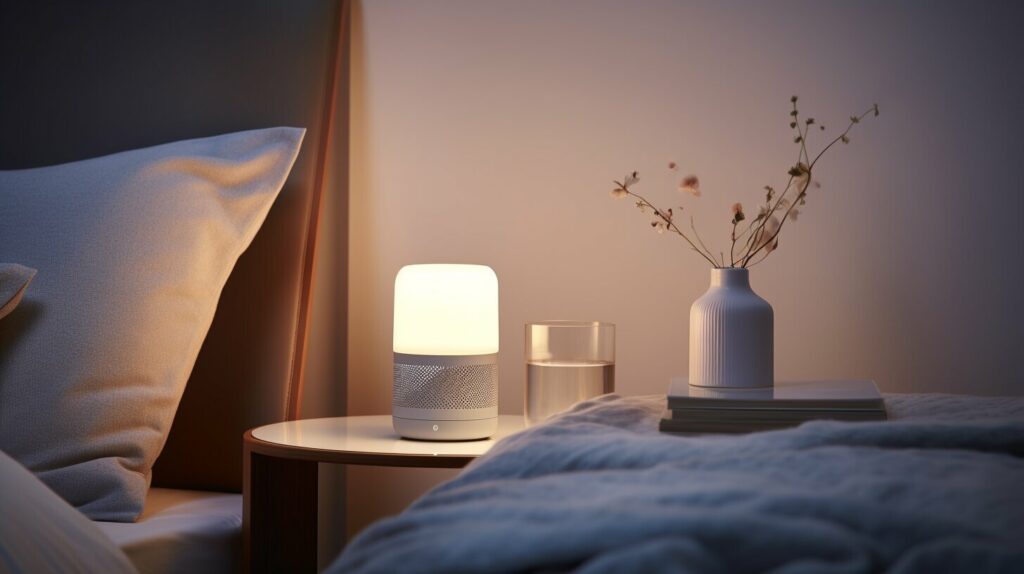
Discover the art of creating a soothing sleep environment with sleep sound solutions that promote relaxation and improved sleep quality. Incorporating sleep sound machines and soothing sleep soundtracks into your nighttime routine can help create the perfect ambiance for a restful night’s sleep.
One effective way to enhance your sleep environment is by using white noise machines. These devices produce a constant, soothing sound that helps mask sudden bursts of noise and create a calming atmosphere. Whether it’s the hum of a fan or the gentle patter of rainfall, white noise machines can drown out distractions and create a peaceful ambiance for sleep.
To further enhance your sleep environment, consider incorporating sleep soundtracks into your routine. You can choose from a variety of options, such as calming nature sounds, soft melodies, or even guided meditations. These sleep soundtracks can help relax your mind and body, easing you into a deep and restful sleep.
Creating a Sleep-Friendly Bedroom
Transform your bedroom into a sleep sanctuary by implementing a few key elements. Keep your bedroom cool and dark, as lower temperatures and minimal light promote better sleep quality. Invest in blackout curtains or an eye mask to block out any unwanted light, and ensure your mattress, pillows, and bedding are comfortable and supportive.
Additionally, consider incorporating sleep-friendly colors and decor into your bedroom. Soft, calming hues like blues, greens, and neutrals can contribute to a relaxing atmosphere. Avoid stimulating elements like bright colors, busy patterns, or electronic devices that emit blue light, as these can disrupt sleep patterns.
| Quick Tips for a Soothing Sleep Environment |
|---|
| Use dim, warm lighting in your bedroom to create a cozy atmosphere. |
| Keep your bedroom clean and clutter-free to promote a sense of calm. |
| Avoid consuming caffeine or engaging in stimulating activities close to bedtime. |
| Establish a soothing bedtime routine that includes activities like reading or taking a warm bath. |
To truly optimize your sleep environment, experiment with different sleep sound solutions and find what works best for you. Combine the use of white noise machines, sleep soundtracks, and a calming bedroom atmosphere to create the ultimate space for rest and rejuvenation.
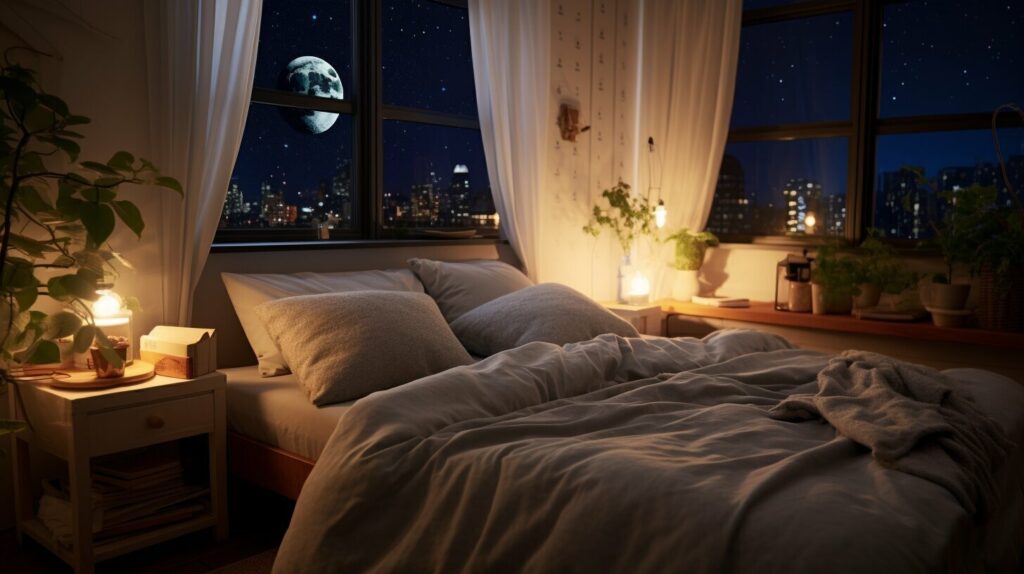
Enhance your sleep experience by incorporating sleep sound solutions into your daily routine and adopting better sleep habits. Creating a soothing sleep environment can greatly improve sleep quality and contribute to overall sleep wellness.
One way to incorporate sleep sound solutions is by using a white noise machine. These devices emit a consistent sound that masks sudden bursts of noise and creates a calming atmosphere. Popular white noise machines on the market, such as the Dreamegg D1, Snooz Sound Machine, and Allway Aqua10, offer various features and designs to suit different preferences.
| White Noise Machine | Key Features |
|---|---|
| Dreamegg D1 | Sleek design, range of sounds |
| Snooz Sound Machine | Comforting fan whir, fade-in and fade-out feature |
| Allway Aqua10 | Bluetooth speaker, humidifier (some functionality issues) |
Another option is to use sleep soundtracks, either through dedicated sleep soundtrack devices or sleep apps on your smartphone. These soundtracks are carefully crafted to promote relaxation and induce sleep. The Sound+Sleep Mini is a highly recommended white noise machine that offers a wide range of sounds, including rain, fans, ocean sounds, and white noise. It also has an adaptive sound mode that adjusts the volume to cover up environmental sounds for uninterrupted sleep.

If you prefer a multi-functional sleep solution, the Hatch Restore 2 combines light and sound therapy to help you fall asleep faster and stay asleep longer. It offers themed light and sound combinations and has a Sunrise feature that gently wakes you up. With a Hatch Sleep Membership subscription, you can access additional features and content to further enhance your sleep experience.
To have sleep sound solutions readily available wherever you go, consider using a White Noise app. This app offers a wide selection of sounds, including white noise, water sounds, campfires, and fans. You can customize timers and alarms to align with your sleep schedule, ensuring a consistent routine for better sleep habits.
Summary
- Incorporating sleep sound solutions into your routine can greatly enhance your sleep experience and improve sleep quality.
- White noise machines, such as the Dreamegg D1, Snooz Sound Machine, and Allway Aqua10, create a soothing environment and mask sudden bursts of noise.
- Sleep soundtracks, like those available on the Sound+Sleep Mini or through sleep apps, promote relaxation and induce sleep.
- The Hatch Restore 2 combines light and sound therapy, while the White Noise app offers portability and customization options.
- By adopting these sleep sound solutions and incorporating better sleep habits, you can achieve a restful sleep and enhance your overall sleep wellness.
Professional Help for Sleep Disorders
If you’re struggling with sleep disorders, it’s crucial to seek professional help and explore sleep therapy for effective sleep solutions. Sleep disorders can significantly impact your overall well-being, making it important to address them promptly. Sleep therapists and professionals specialize in diagnosing and treating a wide range of sleep disorders, including insomnia, sleep apnea, restless leg syndrome, and narcolepsy.
Through sleep therapy, these professionals can provide tailored treatment plans that address the underlying causes of your sleep issues. This may involve cognitive behavioral therapy for insomnia (CBT-I), continuous positive airway pressure (CPAP) therapy for sleep apnea, or medication management for certain sleep disorders. By working with a sleep specialist, you can receive expert guidance and support to improve your sleep quality and overall health.
It’s important to consult with a healthcare provider who specializes in sleep disorders, as they possess the necessary knowledge and expertise to accurately diagnose your condition. They may conduct sleep studies or evaluations to assess your sleep patterns and identify any underlying issues. This thorough evaluation allows them to develop a personalized treatment plan that may include lifestyle changes, sleep hygiene practices, and specific interventions tailored to your needs.
Remember, sleep disorders should never be ignored or dismissed as minor issues. Seeking professional help is essential for finding effective sleep solutions and improving your overall well-being. Don’t hesitate to reach out to a sleep therapist or healthcare provider who can help you regain control of your sleep and achieve better rest.
Sleep Wellness: A Holistic Approach
Sleep wellness involves a holistic approach to improve sleep quality, encompassing various factors such as sleep sound solutions and better sleep habits. These solutions, including the use of white noise machines and soothing sleep soundtracks, can play a significant role in creating a calming sleep environment and enhancing sleep quality.
When it comes to white noise machines, there are several popular options to consider. The Dreamegg D1 stands out for its sleek design and range of sounds, providing users with a customizable experience. On the other hand, the Snooz Sound Machine offers the comforting whir of a fan and a fade-in and fade-out feature, creating a seamless transition into sleep. The Allway Aqua10 is a multi-functional sleep sound solution that doubles as a Bluetooth speaker and humidifier, although it may have some functionality issues.
An exceptional choice for those seeking a wide range of sounds is the Sound+Sleep Mini. With 48 different sounds, including rain, fans, ocean sounds, and white noise, this highly recommended white noise machine caters to various preferences. Its adaptive sound mode adjusts the volume to cover up environmental noises, ensuring a peaceful sleep. Additionally, the compact design and high-fidelity speakers make it a top choice among sleep enthusiasts.
For those looking for an all-encompassing sleep machine, the Hatch Restore 2 combines light and sound therapy to aid in falling asleep faster and staying asleep longer. With themed light and sound combinations, as well as a Sunrise feature for gentle awakening, the Hatch Restore 2 offers a comprehensive solution. Users can enhance their experience with a Hatch Sleep Membership subscription, which grants access to additional features and content.
To achieve sleep wellness, the White Noise app offers a portable sleep sound solution. Its ease of use, wide selection of sounds, and customizable timers and alarms make it a popular choice. With options ranging from white noise and colored noise to water sounds, campfires, and fans, users can find their preferred background noise for a restful sleep. The app also allows for the download of additional sounds, providing even more variety.
| White Noise Machines | Features |
|---|---|
| Dreamegg D1 | Sleek design, customizable sounds |
| Snooz Sound Machine | Fan-like whir, fade-in and fade-out |
| Allway Aqua10 | Bluetooth speaker, humidifier |

“Sleep wellness involves a holistic approach to improve sleep quality, encompassing various factors such as sleep sound solutions and better sleep habits.”
By incorporating sleep sound solutions into your routine and adopting better sleep habits, you can optimize your sleep wellness and improve overall sleep quality. Remember, sleep is an essential part of your well-being, and taking steps to create a soothing sleep environment can make a significant difference in your sleep experience.
The Power of Sound for a Restful Sleep
Harness the power of sound to achieve a restful sleep with sleep sound solutions that promote improved sleep quality and overall sleep wellness. White noise machines and soothing sleep soundtracks can create a calming sleep environment, blocking out unwanted noises and helping you relax into a deep slumber.
One popular choice for enhancing sleep quality is the Dreamegg D1 white noise machine. With its sleek design and range of sounds, including white noise, nature sounds, and lullabies, it provides a soothing backdrop for a restful night’s sleep. The device’s light-up rim also adds a touch of ambiance to your bedroom.
If you prefer the comforting sound of a fan, the Snooz Sound Machine is a great option. It plays a realistic fan sound and features a fade-in and fade-out feature, allowing you to gradually drift off to sleep without sudden interruptions. Its compact design makes it perfect for travel or placing on your bedside table.
For those seeking a multi-functional sleep sound solution, the Allway Aqua10 is worth considering. In addition to being a white noise machine, it doubles as a Bluetooth speaker and humidifier, creating a tranquil atmosphere for sleep. However, some users have reported functionality issues, so it’s important to research and read reviews before making a purchase.
Sleep Sound Solutions Comparison
| Product | Features | Price |
|---|---|---|
| Dreamegg D1 | Sleek design, variety of sounds | $49.99 |
| Snooz Sound Machine | Fan sound, fade-in and fade-out feature | $79.99 |
| Allway Aqua10 | White noise machine, Bluetooth speaker, humidifier | $99.99 |
Whether you choose a white noise machine, a soothing sleep soundtrack, or a combination of both, incorporating sleep sound solutions into your nightly routine can have profound effects on your sleep quality and overall well-being. Soothe your mind, mask disruptive sounds, and experience the rejuvenating power of sound for a truly restful sleep.
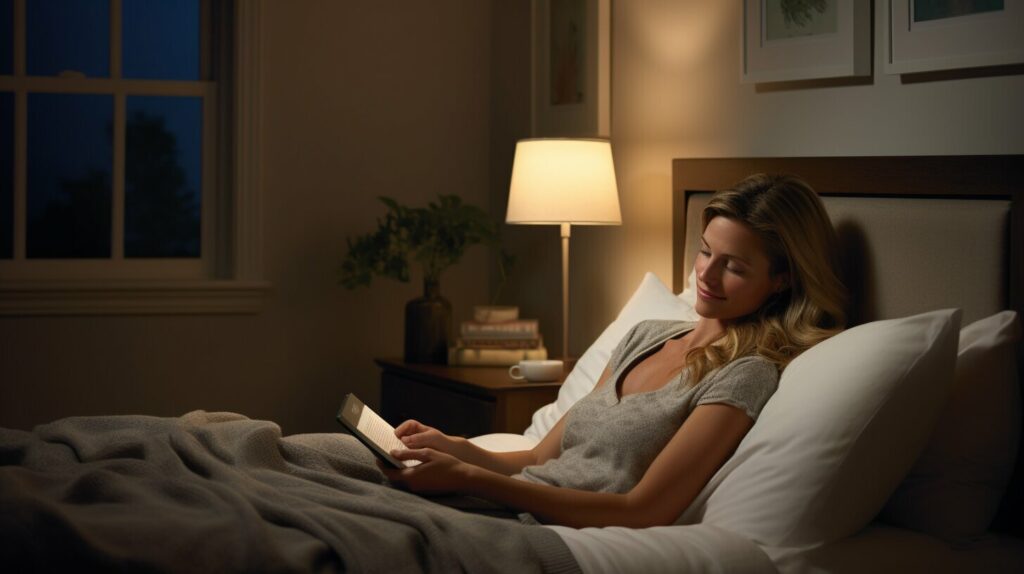
In conclusion, sleep sound solutions offer a range of benefits to improve sleep quality and promote overall sleep wellness, making them a valuable addition to your sleep routine.
White noise machines such as the Dreamegg D1, Snooz Sound Machine, and Allway Aqua10 are popular choices that can help mask sudden bursts of noise and create a soothing environment for sleep. The Dreamegg D1 stands out with its sleek design and a variety of sounds, while the Snooz machine plays the comforting whir of a fan and features a fade-in and fade-out function. Although the Allway Aqua10 doubles as a Bluetooth speaker and humidifier, it may have some functionality issues.
The Sound+Sleep Mini is highly recommended with its 48 different sounds, adaptive sound mode, and high-fidelity speakers. It offers a wide volume range and can effectively cover up environmental sounds. The Hatch Restore 2 is an all-encompassing sleep machine that combines light and sound therapy to help you fall asleep faster and stay asleep longer. Its themed light and sound combinations, Sunrise feature, and Hatch Sleep Membership subscription provide additional features and content.
If you prefer a portable option, the White Noise app is a popular choice. It is easy to use, offers a large selection of sounds, and allows customization of timers and alarms. With options ranging from white noise and colored noise to water sounds, campfires, and fans, the app provides a diverse array of soothing sounds. Additionally, you have the option to download additional sounds from its marketplaces.
Overall, incorporating sleep sound solutions into your sleep routine can effectively improve sleep quality, block out unwanted noises, and create a soothing and calming environment for relaxation and sleep. So why not give them a try and enjoy the benefits of a restful sleep?
FAQ
Q: What are sleep sound solutions?
A: Sleep sound solutions refer to tools and techniques that help improve sleep quality and create a soothing sleep environment. These can include white noise machines and sleep soundtracks.
Q: How do white noise machines benefit sleep?
A: White noise machines mask sudden bursts of noise, create a soothing environment, and help individuals with sleep disorders or difficulties falling asleep. They promote better sleep by creating a consistent and calming background sound.
Q: What are some popular white noise machines on the market?
A: Some popular white noise machines include the Dreamegg D1, Snooz Sound Machine, and Allway Aqua10. These machines offer different features and designs to suit individual sleep preferences.
Q: What are the features of the Dreamegg D1 white noise machine?
A: The Dreamegg D1 offers a range of sounds, has a sleek design with a light-up rim, and has proven to improve sleep quality.
Q: What features does the Snooz Sound Machine have?
A: The Snooz machine plays the comforting whir of a fan and has a fade-in and fade-out feature to create a gentle transition to sleep. It is designed to help improve sleep quality.
Q: Does the Allway Aqua10 have any additional functionality?
A: Yes, the Allway Aqua10 doubles as a Bluetooth speaker and humidifier; however, it may have some functionality issues.
Q: What are the features of the Sound+Sleep Mini white noise machine?
A: The Sound+Sleep Mini offers 48 different sounds, including rain, fans, ocean sounds, and white noise. It has an adaptive sound mode to cover up environmental sounds and high-fidelity speakers.
Q: How does the Hatch Restore 2 sleep machine work?
A: The Hatch Restore 2 uses light and sound to help users fall asleep faster and stay asleep longer. It offers a variety of themed light and sound combinations, as well as a Sunrise feature to gently wake users.
Q: What features does the White Noise app have?
A: The White Noise app is a portable sleep sound solution that offers a large selection of sounds, customizable timers and alarms, and the ability to download additional sound options.
Q: How effective are sleep sound solutions in improving sleep quality?
A: Sleep sound solutions, such as white noise machines and sleep soundtracks, have been shown to improve sleep quality, block out unwanted noises, and create a soothing and calming environment for relaxation and sleep.
Source Links
- https://www.wired.com/gallery/best-sound-machines/
- https://www.cnn.com/cnn-underscored/reviews/best-white-noise-machine
- https://apps.apple.com/us/app/white-noise-deep-sleep-sounds/id1083248251

